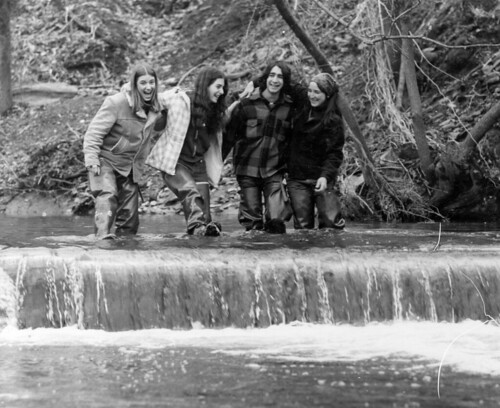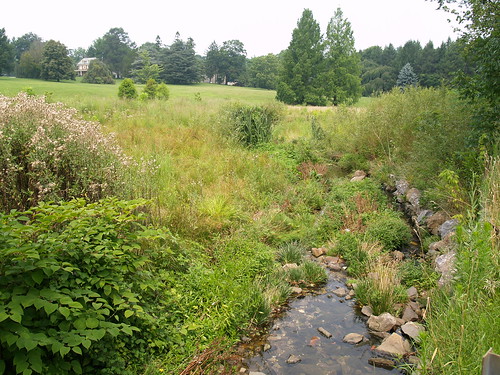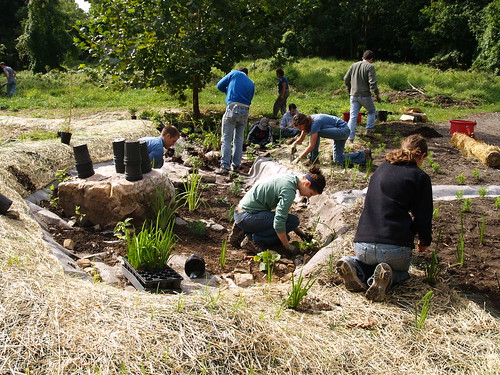Mission
The Lower Merion Conservancy protects and enhances our community’s character and quality of life, recognizing that the sustainable management of our environmental and historic resources is inextricably intertwined with both conservation and change. The Conservancy advocates for policies, programs, and projects that support its vision for the community and builds an informed constituency that can actively support this vision.
History
The Lower Merion Conservancy was formed in September 1995, when the Lower Merion-Narberth Watershed Association merged into the Lower Merion Preservation Trust, and organizations joined forces as the new Lower Merion Conservancy.
The Lower Merion-Narberth Watershed Association was founded in 1974 by Dr. Arthur Wolfe, a science teacher at Lower Merion High School. Art Wolfe orchestrated a variety of stream improvement projects, mostly in Mill Creek, focused on improving the stream’s flow and restoring a population of native trout. At first, his science students volunteered in his projects, but he soon created a community non-profit to organize larger efforts. Over the years, LMNWA built stream bank improvement projects in a variety of locales, like Harriton House and West Mill Creek Park, planted trout eggs, monitored stream chemistry and more.
The Lower Merion Preservation Trust was formed in 1991, the outgrowth of a Lower Merion Township study on disappearing open spaces. LMPT organized to advocate for the preservation of landscapes and community character, and grew to embrace protection of historic resources as well. The trust focused on contacting owners of large properties and arranging for these properties to be set aside in perpetuity.
In 1994, these efforts bore fruit, when Lower Merion Township agreed to purchase the former Walter C. Pew estate in Gladwyne, a 103-acre property now called Rolling Hill Park. The trust served as a conduit for public fundraising for the park’s purchase; ultimately, more than 900 families donated money to support the purchase of the park.
Both the Trust and the Watershed held an abiding interest in landscape preservation, and entered merger discussions in spring 1995, which ultimately resulted in the creation of the Conservancy.
In 1997 the Conservancy began a campaign to restore the 1895 caretaker’s cottage at Rolling Hill Park. The cottage, completely restored by May 2000, served as the headquarters of the Conservancy until 2021. In late spring 2021, the Conservancy began a partnership with Saint Joseph’s University and moved into the Barnes Administration Building on the Saint Joseph’s campus. The cottage still serves as the center of the Conservancy’s education program.


